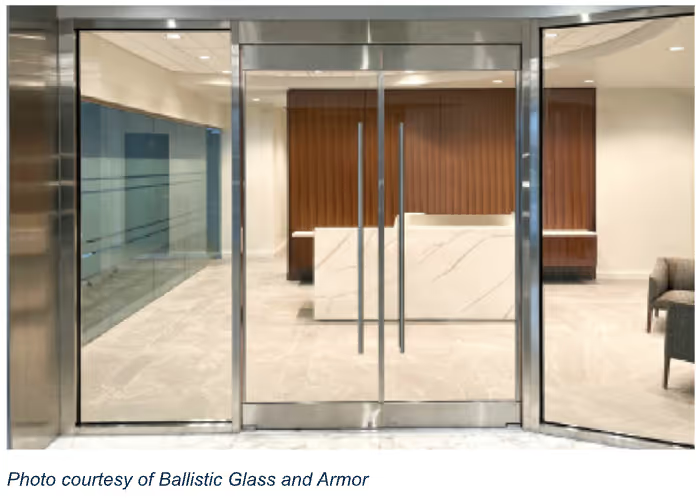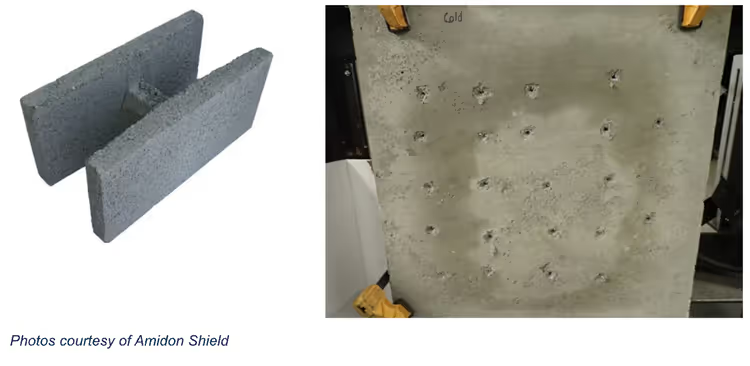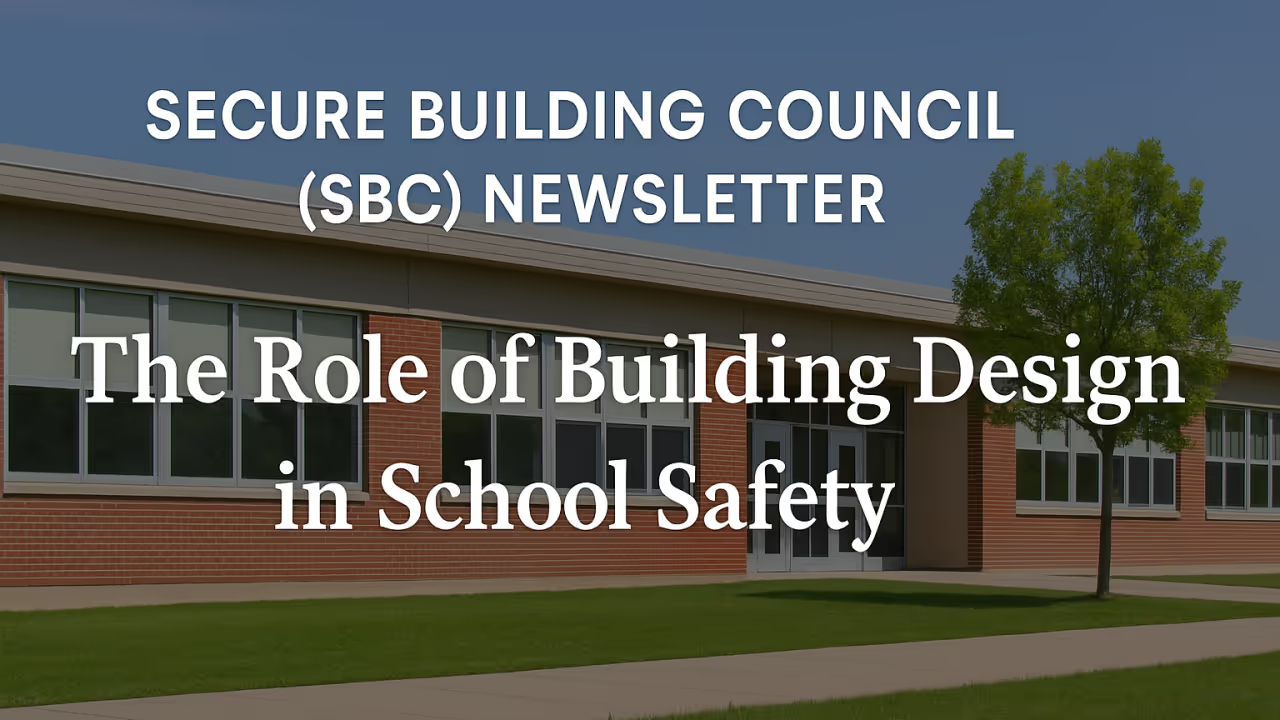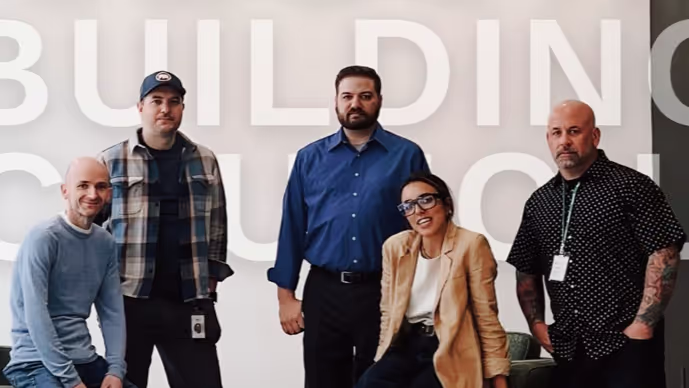Protective Security Design: Next Generation Materials and Solutions to foster Secure Buildings By Herb Ubbens CPP, PSP
.avif)
As security practitioners responsible for the safety and security of people and assets, we are often tasked with providing protective solutions across various asset types to protect against a myriad of risks, threats and vulnerabilities. Understanding the threat facing us is key to ensuring protective security measures and mitigations are effective and responsive. If we are lucky, we get the opportunity to perform some type of assessment whether it be a Risk, Threat and Vulnerability Assessment (RTVA) or a Crime Prevention Through Environmental Design (CPTED) focused assessment. Assessment of the organization and project location during the inception and planning phases can lead to identification of potential risks and threats which, when considered early on can save time and money while increasing safety and security. However, many of us are not that fortunate and may be looked upon for solutions post-construction or after an incident occurs.
The mission of the Secure Building Council is to advocate for and support the implementation of holistic secure design practices in the construction and renovation of buildings, fostering resilient and sustainable communities. With this mission in mind, this article will discuss Protective Security Design (PSD) focusing on the exterior of the property and the building envelope, in particular the use of building materials and design ideas intended specifically to address the threats we face today. From ram-raids, to vehicle incursions, break-ins, looting, civil unrest and active shooters we now have materials and design solutions that are effective at providing protection and can blend into the environment if need be.
When we begin to apply protective design to commercial facilities we realize after spending more than 25 years in the commercial facilities world serving in roles such as Chief Security Officer, Asset, Facilities, Operations or Risk Manager roles where I was directly involved in the development of more than $2 billion in mixed-use CRE I have witnessed and been part of the discussion about incorporating protective measures into the design of these types of buildings. I have found that if the building is not being developed or designed as a high- security building and no known active threats are present or if high-security is not required, quite often the aesthetic of the building may supersede the desire to effectively protect the building if that protection strategy does not fit the organization’s culture or image.
What is Protective Security Design?
Security design often refers to the process of planning and implementing measures to protect a system, infrastructure, or environment from potential threats and vulnerabilities. It involves the creation and integration of various security controls, mechanisms, and practices into the design of a system or facility to ensure its protection and resilience against potential risks. Protective Security Design often refers to the exterior of the building and grounds. For the purposes of this article, we will discuss two types of Protective Security Design: Passive and Active.
Passive vs Active Design
Passive security design can be broadly defined as “a design feature which deters or defends against threats while remaining largely invisible to its users.” Passive security is also predominantly “invisible” as a security product and may blend into the environment. It has been the norm that passive security is about using good design to add a layer of security and protection however we now have many passive security purpose designed products.
Active security is more readily visible and more in line with what most people think of as traditional security. Examples may include gates, high fences, barbed wire, metal detectors, security cameras, and lines of bollards. These security options all project an outward signal of protection and to some, even aggression. Striking a balance between the two is our ultimate goal.
Thinking Beyond the Malicious Threat or Bad Actor
Often our businesses or organizations will be impacted by incidents or events that are not intentional or malicious in nature. Effective PSD can address these types of incidents such as vehicle crashing into buildings or outdoor dining areas which have become much more popular since the pandemic. According to the Storefront Safety Council, vehicles crash into buildings on average 100 times per day in the US.
The protection of outdoor dining areas should be of concern to any landlord or city council that allows on street seating. The use of concrete blocks, Jersey barriers, planters, etc. as protective devices often fail. In many cases they may become projectiles and cause more injuries or damage. There are now shallow base protective systems that provide protection as well serving such purposes as space or seating area delineation and even advertising while keeping people safe.
New Materials and Solutions
Window films and ballistic glass
Although ballistic glass and window films have been around for years, the new materials, designs and installation processes for these solutions has changed and improved protection levels while decreasing the product lead time and construction requirements. Modern window films and laminates can perform to a level we have not seen previously with some manufacturers providing solutions that will prevent a bad actor from entering the space and some even stop bullets on the existing glass. The additional benefits of window film are increased insulation and deflection of UV rays helping to better regulate building temperature by reducing heat gain in the summer and heat loss in the winter months.

Ballistic glass has matured in many ways, and we are now seeing ballistic glass systems in offices, storefronts and schools. The ability to install a frameless door ballistic glass system in an office setting can have a major impact on the security a space which has not been available in the past.

High Performance Shock Absorbing Material (HPSAM)
The ability to build structures that can withstand seismic shock and absorb bullets, reduce the spalling and ricochet effect that typically occurs with traditional concrete has numerous benefits to structures such as data centers, tornado shelter areas, safe rooms and in parts of schools.
Not only can the HPSAM absorb shock and bullets, it is also exceptional in blast and crash scenarios due to its expanded shock absorption and energy dissipation composition.
HPSAM is installed in the same manner as masonry block with options including solid blocks that can be added to existing structures to enhance security. These blocks can be laid by masons and top filled at the site with ballistic concrete to create a highly secure structure. Material can also be poured in place or tilted up at the construction site.

Customized protective devices for Hostile Vehicle Mitigation (HVM) or Ram-Raid protection
These devices can be designed and installed in streets, marketplaces, sidewalks, storefronts as part of both active and passive protection solutions. The ability to provide protection to an area while maintaining the aesthetic may be what designers, architects and owners need to overcome the concern of a protective device looking like a protective device. The critical factor to these design schemes is that they are tested and rated.

Where Do We Go from Here
Threats have changed, risks have changed, and materials and ideas have changed. The key is to understand what options are available to us and our stakeholders. It is incumbent upon us to keep up not only with cool tech that everyone sees and can identify but also the solutions to passively or ”invisibly” address these threats. The earlier we can be involved in the planning and design process the more value we will provide to our organizations and ultimately the safer we will be.
Disclaimer: As with any product or manufacturer, due diligence should be exercised to ensure that the product or solution you are looking to incorporate into your protective design scheme can provide the level of protection under the conditions in which one plans to utilize.





